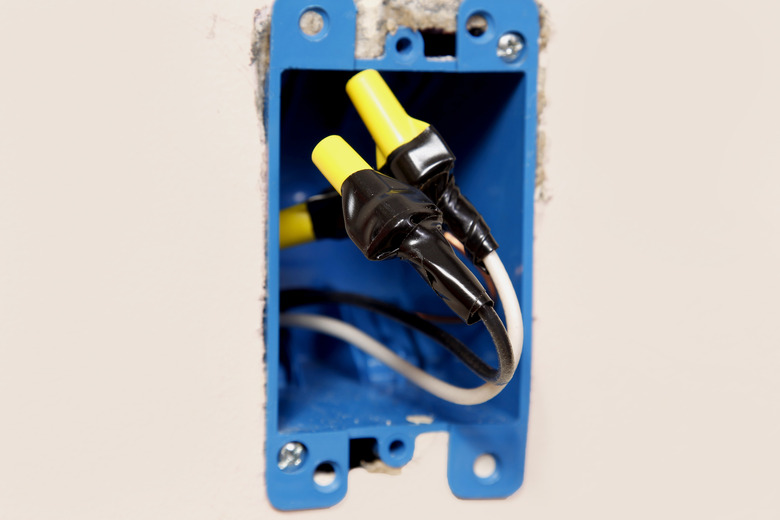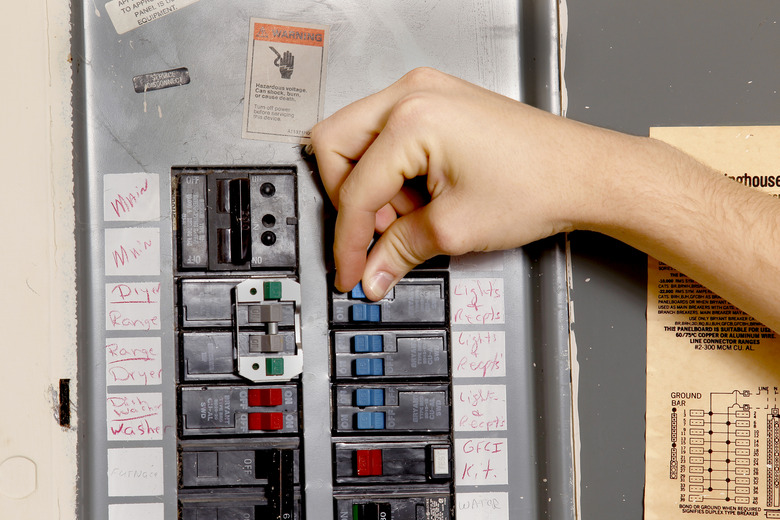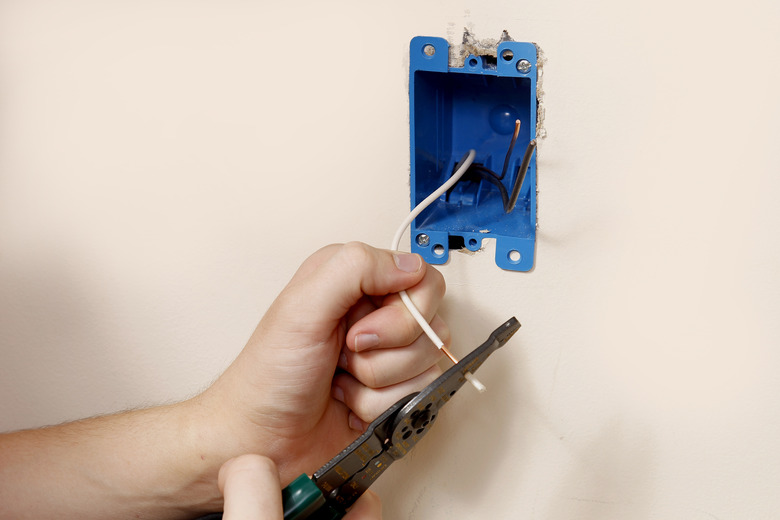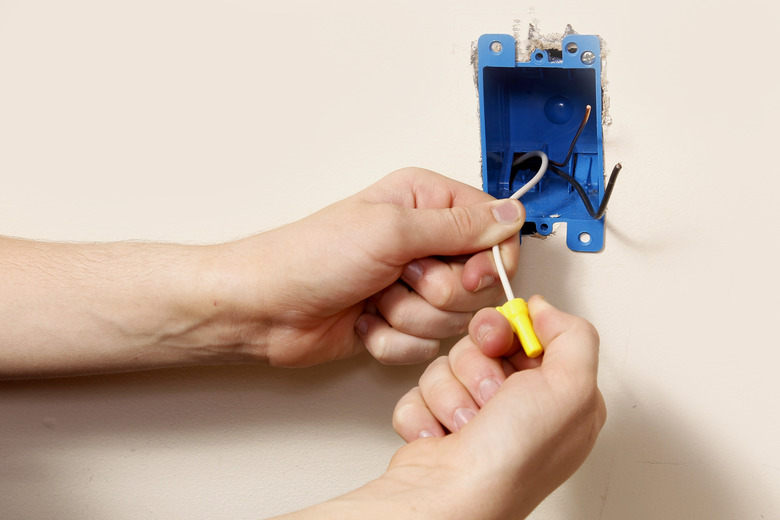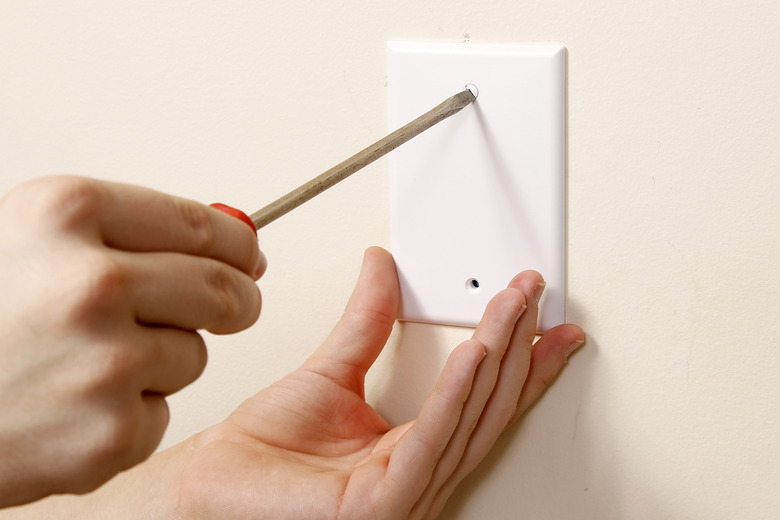How To Cap Off Electrical Hot Wire
Things Needed
-
Diagonal pliers/wire cutters
-
Wire strippers
-
Wire nuts
-
Black, plastic electrical tape
-
Blank box covers
Warning
Although this article specifically addresses capping off electrical hot wires, the code also requires you to cap off the neutral or grounded conductor. Although normally at ground potential, the neutral conductor can become a hot conductor if the break is between another load and neutral bar in the panel. Contrary to what many people will tell you a broken neutral conductor is just as much a dangerous shock hazard as any hot wire. You don't have to concern yourself about the bare copper grounding wire but you should always cap off every neutral as well as hot wire.
Capping off electrical wires is necessary to safely remove a device from a circuit. A wire capable of being made hot by turning on a circuit breaker or replacing a fuse needs to be capped off if not connected to a load or some electrical device. An energized wire is a shock hazard to a person making contact with it. An energized wire is a fire hazard, arcing over between the hot wire and a grounded surface will ignite the combustible material around it. Capping off a wire takes five minutes but it could save your life or the life of someone else.
Step 1
Turn the circuit breaker off or remove the Edison base fuse from the circuit that you will be capping off. Professional electricians cap off wires while they are hot as a routine procedure, but it's not something that the beginner should attempt.
Step 2
Cut back the ends of the wires until they are flush with their insulation so that you will be working with a perfectly straight section of conductor. Remove an inch of insulation from the end of the wire to be capped using the wire strippers.
Step 3
Screw a wire nut tightly over the stripped conductor. Holding the wire tightly in one hand, tug on the wire nut with the other to make sure it holds. Once you have a wire nut firmly in place, tape over the wire nut and wire for extra assurance that it won't come loose.
Step 4
Repeat steps 2 and 3 until you have capped off all the wires. If the wires you capped off are in a device box, a lighting outlet box, a pull box, or a junction box, install a blank cover on the box. Covering device boxes, lighting outlet boxes, pull boxes, and junction boxes is required by the National Electrical Code.
References
- Renovation Headquarters: Using & Choosing Wire Nuts
- Sizes: Wire Connectors
- "National Electrical Code"; NFPA; 2008 Revision
